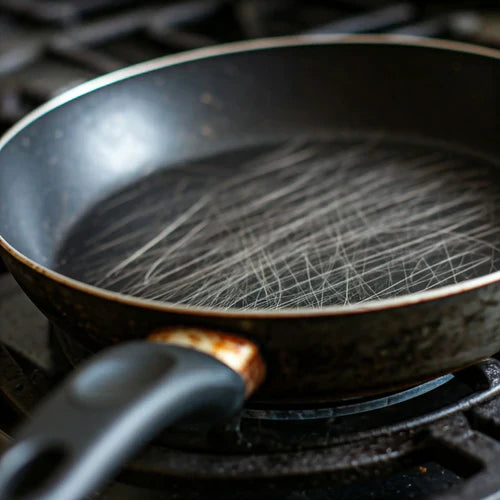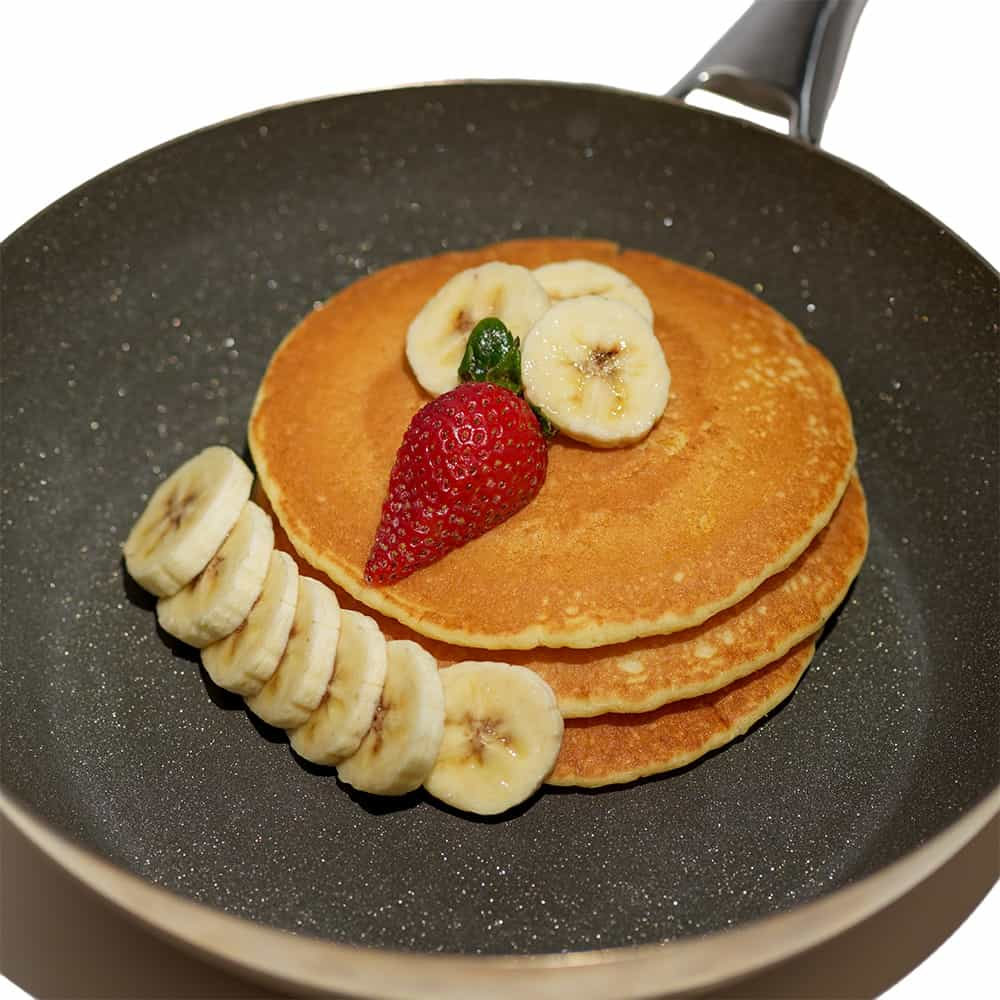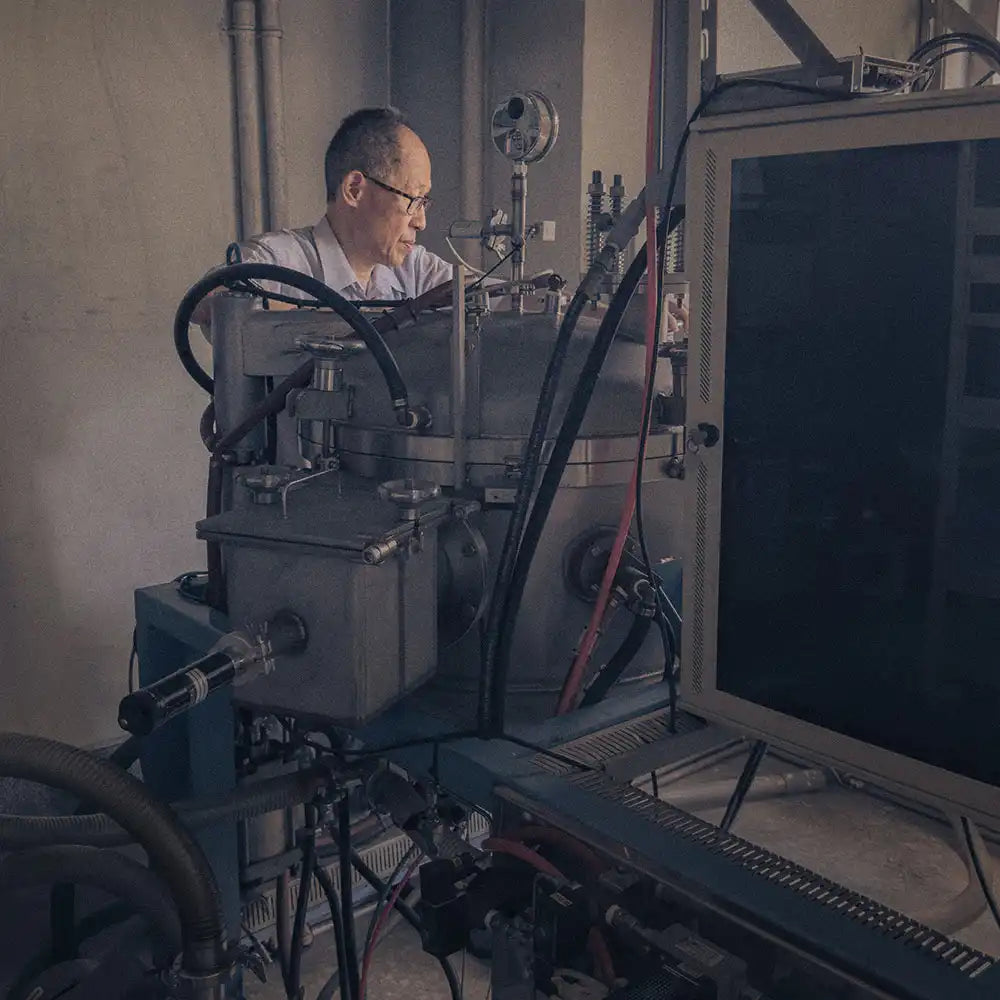
What are PFAS and Why Should People Choose PFAS-Free Cookware?

If you’ve been hearing more about “PFAS” lately and are concerned about how it might affect your health, you’re not alone. PFAS (per- and polyfluoroalkyl substances) are synthetic chemicals known for their heat, grease, and water resistance. Unfortunately, they’re also called “forever chemicals” because they can linger in the environment and in our bodies. One everyday source of PFAS exposure can be through non-stick cookware. So, what exactly are PFAS, and why should you consider switching to PFAS-free cookware? Keep reading to find out.
What Are PFAS?
Definition and Characteristics
- Synthetic Chemicals: PFAS refers to a large group of chemicals (over 6,000 identified compounds) that have been in use since the 1950s [1].
- Persistent: These chemicals are extremely resistant to breaking down, which is why they’re called “forever chemicals” [2].
- Common Uses: From non-stick cookware and food packaging to firefighting foam and outdoor gear, PFAS are widespread in consumer products [1,5].
Types of PFAS
Perfluoroalkyl Compounds: All carbon atoms are bonded to fluorine atoms.
Polyfluoroalkyl Compounds: Some hydrogen atoms remain, in addition to fluorine atoms.
Both forms can easily be transported in the environment, traveling great distances from where they were originally released [3,7].
Health Risks of PFAS
While research is ongoing, studies have linked PFAS exposure to several potential health concerns, including:
- Increased Cholesterol Levels [8]
- Reduced Vaccine Response [8]
- Thyroid Disease [8]
- Liver Damage [2]
- Kidney Disease [9]
- Testicular and Kidney Cancer [2]
- Immune Deficiency [2]
- Developmental and Reproductive Effects in children [10]
Ongoing Research: Initiatives like the EU’s Human Biomonitoring Initiative (HBM4EU) are dedicated to understanding the long-term effects of low-level PFAS exposure, especially in children [11]. The science is continually evolving, so it’s crucial to stay informed.
How PFAS Leach into Food from Cookware
PFAS can migrate into your food from multiple sources:
- Non-Stick Cookware: Overheating or chipping can cause PFAS to leach into your meals [14].
- Food Packaging and Processing Equipment: Some food packaging still contains PFAS, which can move into the food, especially under high heat or fatty conditions [12,13].
- Contaminated Water, Crops, and Livestock: PFAS can enter the food chain through polluted water sources and soils [16].
Because PFAS can persist in the environment for such a long time, it’s tough to avoid them entirely. However, choosing PFAS-free cookware is a significant step in minimizing exposure.
Environmental Impact of PFAS
PFAS contamination extends far beyond your kitchen:
- Water Sources: These chemicals can contaminate surface and groundwater [19].
- Wildlife: Fish, deer, and other wildlife can accumulate high levels of PFAS, prompting consumption advisories in some regions [20].
- Soil and Ecosystems: Research has found that even low concentrations can harm aquatic animals, amphibians, and insects [21].
Because PFAS are extremely persistent, they can remain in the environment for decades, posing a long-term threat to ecosystems and public health [17,18].
Popular PFAS-Free Cookware Options
When switching away from traditional non-stick pans, you have several safe and effective choices:
| Cookware Type | Description | Advantages | Disadvantages |
|---|---|---|---|
| Ceramic Cookware | Features a ceramic coating free of PFOA and PTFE [23]. | Often marketed as non-toxic; good nonstick properties. | May not be as durable; nonstick surface can degrade over time. |
| Cast Iron Cookware | Made entirely from cast iron. | Durable, long-lasting, naturally PFAS-free, handles high temperatures. | Requires seasoning and care; can be heavy. |
| Stainless Steel | Constructed from stainless steel alloys. | Durable, PFAS-free, safe for high heat. | May need more cooking oil or butter; can stain over time. |
| Diamond Cookware | Constructed from real diamond crystals or dust. | Durable, PFAS-free, naturally non-stick. | Need cooking oil or butter for better non-stick performance; can stain over time. |
Diamond Cookware: A Standout PFAS-Free Option
A newer alternative gaining popularity is diamond cookware. It’s important to note that “diamond cookware” often refers to two distinct products under the same umbrella: one more budget-friendly type uses a diamond-infused ceramic nonstick coating [24], while the most high-end variety employs vacuum-brazed diamond technology [26].

Construction and Performance
- Diamond-Infused Coating: Diamonds are extremely hard and excellent heat conductors, which helps ensure even heat distribution and durability [28],[29].
- Vacuum Brazing: A specialized technique to bind diamonds to the cookware surface under precise conditions, creating a bond that remains intact over time [28],[29],[30].
Advantages of Diamond Cookware
- Durability: Diamond is one of the hardest substances on Earth, making cookware highly resistant to scratches and wear [28],[29].
- Excellent Heat Transfer: Diamonds conduct heat more efficiently than copper, leading to faster and more even cooking [28].
- Nonstick Properties: Diamond cookware is naturally nonstick, reducing the need for extra oil or butter [37].
- Long Lifespan: Often designed to last a lifetime, making it a cost-effective choice that also helps reduce waste [25].
- Toxin-Free: Typically manufactured without PFAS, PFOA, lead, or cadmium [34],[37].
Why Vacuum Brazing Is Superior
Vacuum brazing attaches diamonds to the cookware under precisely controlled temperatures and a highly controlled environment [28],[29],[30]. This process yields:
- Stronger Bonds: The diamonds stay firmly in place on the cooking surface [29].
- Reduced Warping: Careful temperature regulation prevents the cookware from distorting.
- Uniform Heat Distribution: The vacuum environment ensures a consistent temperature throughout the brazing process.
These benefits translate into cookware that remains durable, safe, and high-performing over the long haul.
The Evolving Market for PFAS-Free Cookware
Consumer demand for PFAS-free options is on the rise, driving cookware manufacturers to produce safer alternatives. Organizations like Chemsec have launched campaigns like “Knockdown!” to highlight PFAS-free cookware solutions that still offer top-tier nonstick performance [33]. This shift underscores the growing awareness and urgency to reduce PFAS usage in consumer goods.
Making an Ethical Choice: Why Diamond Cookware?
Choosing diamond cookware is not just about better cooking performance; it’s also about taking a stand for:
- Health: Diamond cookware is free from PFAS, reducing potential health risks.
- Longevity and Sustainability: Built to last a lifetime, helping to cut down on waste.
- Environmentally Responsible Manufacturing: Some brands, like Swiss Diamond, emphasize eco-friendly production [31].
Conclusion
PFAS are “forever chemicals” that pose long-term health and environmental risks. While it can be challenging to avoid them entirely, choosing PFAS-free cookware is an impactful way to protect both your family and the planet. Among the various PFAS-free options, diamond cookware stands out for its durability, heat distribution, and toxin-free manufacturing.
Staying informed about PFAS in consumer products—and supporting stricter regulations—can help lower overall exposure. By opting for PFAS-free cookware, particularly diamond-infused models, you invest in a safer kitchen, a more sustainable lifestyle, and a healthier future for everyone.
References
- Wisconsin Department of Health Services (dhs.wisconsin.gov) https://www.dhs.wisconsin.gov/chemical/pfas.htm
- PFAS - Perfluoroalkyl and polyfluoroalkyl substances - VA Public Health https://www.publichealth.va.gov/exposures/pfas.asp
- clu-in.org https://clu-in.org/contaminantfocus/
- Per- and Polyfluoroalkyl Substances (PFAS) - FDA https://www.fda.gov/food/environmental-contaminants-food/and-polyfluoroalkyl-substances-pfas
- Per- and Polyfluoroalkyl Substances (PFAS) - Mass.gov https://www.mass.gov/info-details/per-and-polyfluoroalkyl-substances-pfas
- Contaminants > Per- and Polyfluoroalkyl Substances (PFAS) > Chemistry and Behavior https://clu-in.org/contaminantfocus
- Per- and polyfluoroalkyl substances (PFAS) - ECHA - European Union https://echa.europa.eu/hot-topics/perfluoroalkyl-chemicals-pfas
- Chemicals: Perfluoroalkyl and Polyfluoroalkyl (PFAS) Substances | Wisconsin Department of Health Services https://www.dhs.wisconsin.gov/chemical/pfas.htm
- Per- and Polyfluoroalkyl Substance Toxicity and Human Health Review: Current State of Knowledge and Strategies for Informing Future Research https://pmc.ncbi.nlm.nih.gov/articles/PMC7906952/
- Our Current Understanding of the Human Health and Environmental Risks of PFAS https://www.epa.gov/pfas/our-current-understanding-human-health
- What are PFAS and how are they dangerous for my health? - European Environment Agency https://www.eea.europa.eu/en/about/contact-us/faqs/what-are-pfas
- www.fda.gov https://www.fda.gov/food/process-contaminants-food
- Presence of Perfluoroalkyl and Polyfluoroalkyl Substances (PFAS) in Food Contact Materials (FCM) and Its Migration to Food - PMC https://www.ncbi.nlm.nih.gov/pmc/articles/PMC8306913/
- PFAS and food packaging – FAQ - CHEM Trust https://chemtrust.org/pfas-food-packaging-faq/
- PFAS Leaches into Ketchup, Mayo, Other Common Foods, Elevating Health Hazards - Beyond Pesticides Daily News Blog https://beyondpesticides.org/dailynewsblog/2023/03/pfas-leaches-into-ketchup
- Emerging contaminants in food matrices: An overview of the occurrence, pathways, impacts and detection techniques of per- and polyfluoroalkyl substances https://www.ncbi.nlm.nih.gov/pmc/articles/PMC11033125/
- PFAS, what is it, why is it in our environment and why is it a problem? https://www.pfasfree.org.uk/about-pfas
- Understanding PFAS in the Environment | US EPA https://www.epa.gov/sciencematters/understanding-pfas-environment
- Environmental and Health Impacts of PFAS - Wisconsin DNR https://dnr.wisconsin.gov/topic/PFAS/Impacts.html
- How Does PFAS Contamination Impact the Environment? - TRC Companies https://www.trccompanies.com/insights/pfas-contamination-environment/
- Health and environmental impacts prompt a call for strict ruling on ubiquitous 'forever chemicals' - European Union https://environment.ec.europa.eu/news/health-and-environmental-impacts
- 6 Best Nontoxic Cookware of 2024, Tested and Reviewed - Food Network https://www.foodnetwork.com/how-to/packages/shopping/product-reviews
- We Tested Hundreds of Pots and Pans to Find the Best Non-Toxic Cookware Sets https://www.foodandwine.com/lifestyle/kitchen/best-non-toxic-cookware
- An In-Depth Review of The Blue Diamond Pan - Daring Kitchen https://thedaringkitchen.com/blue-diamond-pan-review/
- Diamond: Shaping the Future of Cookware https://diamondpans.com/blogs/news/diamond-shaping-the-future-of-cookware
- Sixty Carats Pan | diamondPans https://diamondpans.com/products/60-carats-pan
- What Is Vacuum Brazing? Process, Benefits, & More - Elcon Precision https://www.elconprecision.com/vacuum-brazing/
- How to Choose Diamond Cookware: Carat Weight Matters Most https://diamondpans.com/blogs/news/how-to-choose-diamond-cookware-carat-weight-matters-most
- Vacuum Brazed vs. Diamond-Infused Cookware: The Guide to Choosing High-Performance Kitchen Tools https://diamondpans.com/blogs/news/vacuum-brazed-vs-diamond-infused-cookware-the-guide-to-choosing-high-performance-kitchen-tools
- Best Diamond Coated Cookware? What You NEED to Know Before You Buy https://diamondpans.com/blogs/news/best-diamond-coated-cookware-what-you-need-to-know-before-you-buy
- Why more brands will become PFAS-free in 2025 - Modern Retail https://www.modernretail.co/operations/why-more-brands-will-become-pfas-free-in-2025/
- Non-Stick Cookware Market Projected to Hit USD 25.3 Billion - GlobeNewswire https://www.globenewswire.com/news-release/2024/01/16/2809503
- Knockdown! The ultimate proof that frying pans don't need PFAS - ChemSec https://chemsec.org/knockdown-the-ultimate-proof-that-frying-pans-dont-need-pfas/
- Are you eating PFAS? The fight to better regulate forever chemicals in food manufacturing https://www.manufacturingdive.com/news/pfas-food-contact-substances-fda
- Sustainability - diamondPans https://diamondpans.com/pages/sustainability
- Swiss Diamond Cookware ? - Kitchen Consumer - eGullet Forums https://forums.egullet.org/topic/103225-swiss-diamond-cookware/
- Why Diamonds Are Naturally Nonstick? - diamondPans https://diamondpans.com/blogs/news/why-diamonds-are-naturally-nonstick
Ready to Make the Switch?
If you’re eager to protect your health and the environment, consider transitioning to PFAS-free cookware. Every small change in your kitchen can have a big impact on both your well-being and the planet.


